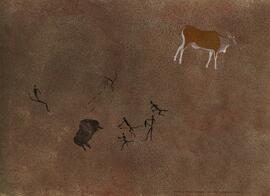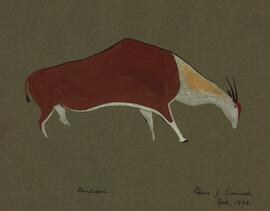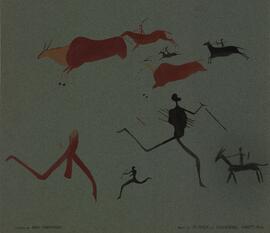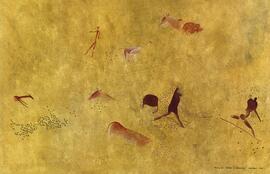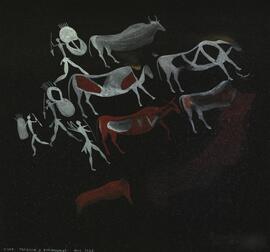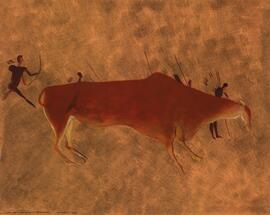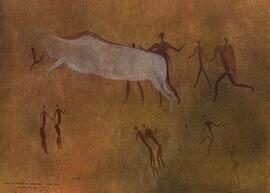PJV PJV-NMSA-PJV-01-02HC.jpg
·
Item
·
01/07/1959
Part of Vinnicombe, Patricia
Artist rendering
1690 Images & Collections results for Artist rendering
1690 results directly related
Exclude narrower terms
PJV PJV-NMSA-PJV-01-30HC.jpg
·
Item
·
04/1956
Part of Vinnicombe, Patricia
PJV PJV-NMSA-PJV-01-31HC.jpg
·
Item
·
08/1956
Part of Vinnicombe, Patricia
PJV PJV-NMSA-PJV-01-32HC.jpg
·
Item
·
07/1956
Part of Vinnicombe, Patricia
PJV PJV-NMSA-PJV-01-33HC.jpg
·
Item
·
07/1956
Part of Vinnicombe, Patricia
PJV PJV-NMSA-PJV-01-34HC.jpg
·
Item
·
12/1958
Part of Vinnicombe, Patricia
PJV PJV-NMSA-PJV-01-35HC.jpg
·
Item
·
12/1958
Part of Vinnicombe, Patricia
In rock art, one sees depictions of nested U-shapes with bees. Bushman shamans interpreted this particular shape as a honeycomb because bees are a Bushman symbol of potency. In the Kalahari, Bushmen dance when bees are swarming because they believe that they can harness their potency for a particularly effective dance. Poacher’s Shelter I
PJV PJV-NMSA-PJV-01-36HC.jpg
·
Item
·
07/1956
Part of Vinnicombe, Patricia
PJV PJV-NMSA-PJV-01-37HC.jpg
·
Item
·
08/1960
Part of Vinnicombe, Patricia
PJV PJV-NMSA-PJV-01-38HC.jpg
·
Item
·
09/1956
Part of Vinnicombe, Patricia
PJV PJV-NMSA-PJV-01-39HC.jpg
·
Item
Part of Vinnicombe, Patricia
Different kinds of bows are depicted in San art. From curved, comparatively straight and triple curved there are a variety of bows found in rock art.Depiction of arrows, whether they be real or not (arrows of sickness) are quite common in rock art.Arrows of sickness are said to be small, invisible arrows that malevolent shamans shoot into people whom they wish to make ill.
The arrow points were traditionally made of bone and later of iron. Each point is distinctive; hunters recognise their own and others’ arrows. This is important because an animal belongs to the owner of the fatal arrow, and that person has the responsibility of distributing the meat equitably amongst all the people in the camp.
The poison for which the San are known is placed behind the point so as not to blunt it. The poison was made from snake venom, certain plants and beetle larvae. There is no known antidote, and the San are extremely careful indeed to avoid it getting into their eyes and skin. Men carry their arrows in quivers. KwaZulu-Natal Museum
PJV PJV-NMSA-PJV-01-03HC.jpg
·
Item
·
01/04/1958
Part of Vinnicombe, Patricia
